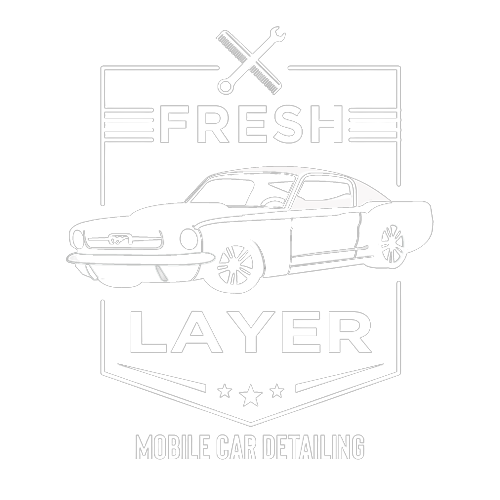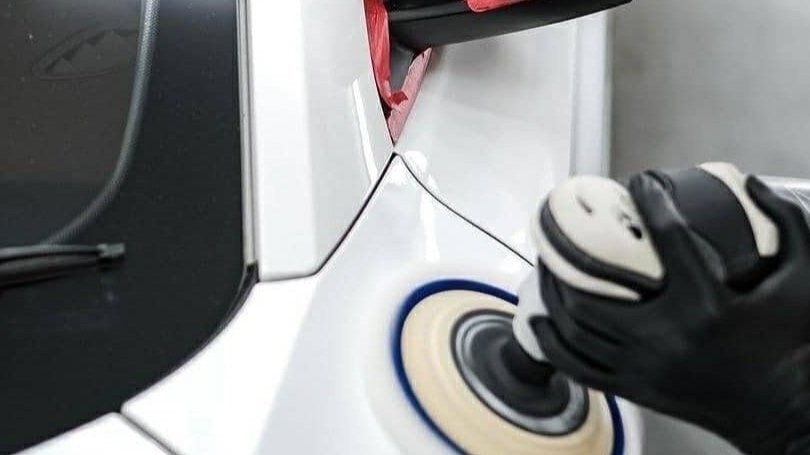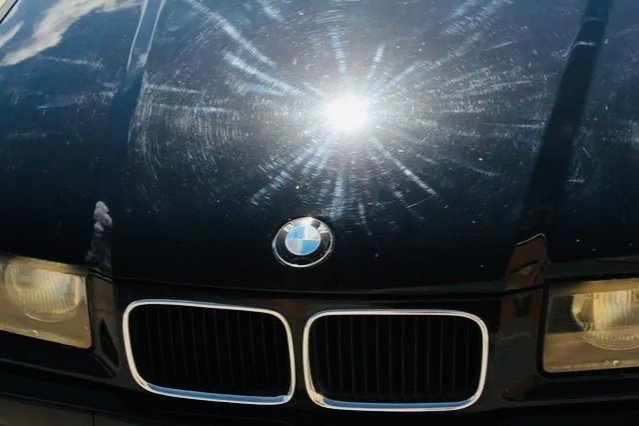Paint Correction San Diego
Here is A few thinks about pain correction, polish, and buffing.
What's the difference between buffing and polishing?
If you're looking to improve the appearance of your car's paintwork, you may have heard of the terms "buffing" and "polishing."
But what do these terms mean, and how do they differ from each other? In this blog post, we'll explore the differences between buffing and polishing, as well as the advantages and disadvantages of each technique, to help you decide which one is right for your car.
As a San Diego mobile detailing business, Fresh Layer Mobile Detailing can provide professional polishing services to restore your car's paintwork to its original shine and luster
Find the Right Paint Restoration Solution
Answer these simple questions for a tailored recommendation
Question 1: What is the current condition of your car’s paint?
What's The Difference Between Buffing and Polishing in Real World ?
Buffing Use
Buffing and polishing are both techniques used to improve the appearance of a car's paintwork, but they differ in their aggressiveness and the type of imperfections they address.
Polishing Use
Buffing is a more aggressive approach that removes deeper scratches, swirl marks, and other imperfections from the paintwork usually used by body shops. Polishing, on the other hand, is a gentler approach that removes very fine scratches and swirl marks, leaving behind a smoother and more even finish performed by professional car detailers.
Buffing And Polishing Purpose
Buffing More Aggressive Approach
Buffing is a technique that involves the use of a machine with a rotating pad that applies a compound to the car's surface.
This compound is typically abrasive and helps to remove deeper scratches, oxidation, and other imperfections from the paintwork.
Buffing is a more aggressive approach than polishing and is typically used when the paintwork has significant imperfections that need to be addressed.
Buffing is a more aggressive technique that should be approached with caution, as it can cause damage to the paintwork if not done correctly. Specially when you use rotary polishing machine.
The abrasive material used in buffing is typically coarser than that used in polishing, which means it removes more material from the paint and can leave deeper marks if not used properly.
Buffing generates more heat and friction than polishing, which can also increase the risk of causing damage to the paint if the process is not monitored carefully.
Buffing is a time-consuming process that requires a high level of skill and experience to achieve the desired results.
Understanding the Buffing Process
Buffing is a surface treatment process primarily used for smoothing and polishing metals to achieve a glossy and refined appearance.
This technique involves the use of a rotary polishing machine or pad combined with an abrasive compound to remove imperfections, scratches, and dullness, resulting in a range of finishes from semi-bright to high luster.
What dose buffing car do
Buffing a car involves removing a small layer of paint clear coat from the car's finish to reveal a fresh layer underneath, thereby improving the car's appearance and restoring its original luster.
It encompasses various activities such as compounding, polishing, waxing, and wiping different products on or off the panels. This process effectively removes surface defects like small scratches, etching, oxidation, and even more significant issues like yellowing or foggy headlights
Polishing - A More Gentle Approach
Polishing Purpose
Polishing is a technique that involves the use of a finer abrasive material to remove very fine scratches and swirl marks from the paintwork.
The car polish process also helps to enhance the shine and gloss of the paint, giving it a more reflective and lustrous appearance.
Polishing is a more gentle approach than buffing and is typically used when the paintwork is in relatively good condition but needs some enhancements and gloss.
Polishing is a more gentle approach that is typically used for maintaining the appearance of a car's paintwork and shiny surface rather than repairing significant imperfections.
The abrasive material used in polishing is finer than that used in buffing, which means it removes less material from the paint and is less likely to cause damage.
Polishing generates less heat and friction than buffing, making it a safer option for maintaining the appearance of the paintwork.
Polishing can be done more frequently than buffing to maintain the car's appearance, as it is less aggressive and does not remove as much material from the paint.
Overall, both buffing and polishing can be effective techniques for improving the appearance of a car's paintwork, but they should be used carefully and with the appropriate equipment to avoid causing damage. It's always recommended to seek the assistance of a professional detailer to ensure the best results.
Can Buffing or Polishing Damage My Car Paint?
How Buffing Can Damage Your Paint
If done improperly, buffing or polishing can cause damage to your car's paintwork. Buffing, in particular, can be more aggressive and can cause swirl marks, holograms, or even burn through the paint if not done correctly.
It's essential to hire a professional or follow the manufacturer's instructions carefully if you plan to buff or polish your car's paintwork.
While buffing is a popular technique for restoring a car's paintwork, it can be a double-edged sword. If not done correctly, buffing can cause swirl marks and holograms in the paint, which can detract from the overall appearance of the car.
One of the reasons why many cars from body shops have swirl marks and holograms is that the technique requires a high level of skill and experience to achieve the desired results.
Paint Holograms
Many inexperienced technicians may not use the right equipment, compounds, or techniques, resulting in damage to the paintwork.
Additionally, many older body shops may not have access to the latest equipment and technology, which can make it more difficult to achieve a flawless finish.
How Polishing Can Damage Your Paint
Polishing can help to remove very fine scratches and swirl marks from the paintwork, leaving behind a smoother and more even finish. It can also help to enhance the shine and gloss of the paint, giving it a more reflective and lustrous appearance.
However, like buffing, polishing also requires a high level of skill and experience to achieve the desired results. If done improperly, polishing can also cause swirl marks and holograms in the paint, detracting from the overall appearance of the car.
To avoid swirl marks and holograms when polishing, it's essential to use the appropriate equipment and techniques.
How Often Should I Buff or Polish My Car Paint?
The frequency of buffing or polishing your car's paintwork will depend on a few factors, including the condition of the paint, how often the car is used, and how important it is to you to maintain the car's appearance.
Buffing is a more aggressive process than polishing, as it removes a significant amount of clear coat from the paint, making it a less frequent process. Typically, buffing should be done when the car's paintwork has significant imperfections, such as deep scratches or oxidation, that can't be removed through polishing.
Polishing, on the other hand, is a more gentle approach that can be done more frequently to maintain the car's appearance usually once a year. How often you polish your car's paint will depend on how often you want to maintain its shine and gloss.
Generally, it's recommended to polish your car's paintwork every six months to a year, depending on how often the car is used and how important it is to you to keep the paint looking its best.
It's important to note that over-buffing or over-polishing can cause damage to the paintwork, so it's essential to follow the manufacturer's instructions and best practices when buffing or polishing your car's paintwork. It's also important to choose the appropriate products and equipment for your car's specific needs to achieve the best results.
The frequency of buffing your car depends on several factors, including the type of car you have, how often you use it, and the climate you live in. However, as a general rule, you should only need to buff your car once or twice a year.
Factors that affect how often you need to buff your car:
Type of car: Cars with darker paint colors are more likely to show swirls and scratches, so they may need to be buffed more often than cars with lighter paint colors.
Frequency of use: If you park your car outdoors all the time and drive it frequently,it will be exposed to more dirt, debris, and UV rays, which can damage the paint and make it more likely to need buffing.
Climate: If you live in an area with harsh weather conditions, such as extreme heat,cold, or salt in the air, your car's paint will be more likely to fade and deteriorate,which may require buffing more often.
Signs that your car needs buffing:
Swirls and scratches: These are fine,hairline scratches that make the paint look dull and hazy.
Fading: The paint may look faded or discolored, especially on darker cars.
Oxidation: The paint may look oxidized or chalky, especially on older cars.
Tips for buffing your car:
Wash your car thoroughly: This will remove dirt, debris, and any loose paint that could scratch the paint during buffing.
Use a high-quality buffing compound:Choose a compound that is appropriate for the type of paint on your car.
Use a buffing pad: A buffing pad helps to distribute the compound evenly and protect the paint.
Buff in small sections: Work in small sections at a time to avoid overheating the paint.
Buff with light pressure: Apply gentle pressure to the buffing pad to avoid damaging the paint.
If you are not comfortable buffing your car yourself, you can take it to a professional detailer. They will have the tools and experience to buff your car safely and effectively.
Is It Possible to Buff or Polish Away Swirl Marks?
Swirl marks are a common issue on a car's paintwork that can be caused by various factors, including improper washing techniques, using dirty or abrasive towels, and even using the wrong type of wax or sealant.
Polishing can be an effective way to remove swirl marks from a car's paintwork. However, it's important to use the right technique and equipment to avoid causing further damage to the paint.
When polishing to remove swirl marks, it's essential to choose the appropriate polishing pad and compound for the job. The polishing pad should be a foam pad with a light cutting ability, while the polishing compound should be a fine abrasive that's capable of removing the swirl marks without causing damage to the paint.
It's also important to use the right speed setting on the polishing machine and to keep the pad lubricated to prevent heat buildup and damage to the paint. Additionally, it's recommended to work in small sections and to avoid applying too much pressure on the pad, as this can cause further damage to the paint.
Yes it is possible to buff or polish away swirl marks from a car's paintwork, but it's important to use the right technique and equipment to avoid causing further damage. If you're unsure about how to remove swirl marks from your car's paintwork, it's recommended to seek the assistance of a professional paint corection who has the necessary skills and experience to achieve the best results.
Difference Between Buffing and Polishing
Buffing is a process that removes scratches, marks, and oxidation from surfaces, often using a cloth wheel with a compound. It focuses on creating a bright, lustrous finish and smoothing out imperfections.
Polishing, on the other hand, uses abrasive belts to achieve a glossy, reflective finish, often resulting in a brushed or lined surface.
While buffing is more aggressive and employs heavier compounds for cutting into clear coats (especially on vehicles), polishing utilizes finer compounds to enhance gloss and shine.
Understanding these differences is crucial for achieving the desired results in surface finishing
FAQ Section: The Difference Between Buffing and Polishing
-
Buffing generally refers to the initial process of removing imperfections from a vehicle's paintwork. This method uses a buffing pad and a machine to even out the surface by minimizing deep scratches and oxidation marks. It often involves using compounds that are slightly abrasive to remove a thin layer of paint or clear coat from the vehicle's exterior.
-
Polishing is a follow-up process to buffing, designed to achieve a smooth, shiny finish on the vehicle's surface. It uses finer abrasives compared to buffing and is often done with a softer pad and a less abrasive product, like a polish, to enhance the paint's gloss and shine. Polishing helps in removing any fine scratches or swirl marks left by the buffing process.
-
The primary difference in purpose between buffing and polishing is their role in the detailing process. Buffing is mainly corrective, targeting and minimizing visible defects and damage to the paint's surface. Polishing, on the other hand, is finishing, aimed at achieving a high gloss finish that enhances the vehicle's aesthetic appeal.
-
While both buffing and polishing can be attempted as DIY projects, they require careful handling to avoid damage to the paint. Professional detailers are recommended because they have the correct tools and expertise to perform these tasks safely and effectively.
-
Both processes require a rotary or dual-action polisher but differ in the type of pads and compounds used. Buffing uses coarser pads and more abrasive compounds to remove deeper imperfections, while polishing uses finer pads and polishes to create a high shine.
-
The frequency depends on the vehicle’s exposure to the elements and how it is used. Generally, buffing should be done sparingly, as it removes a small amount of paint. Polishing can be done more frequently, like once or twice a year, to maintain the vehicle’s aesthetic appeal and protect the paint.
-
Yes, if not done correctly, both buffing and polishing can lead to paint damage. Over-buffing can thin out or even remove the clear coat, exposing the paint to environmental elements. Incorrect polishing can create swirl marks or holograms, particularly if using an overly abrasive polish or pad.
So What The Best Buffing or Polishing ?
Buffing and Polishing are both effective techniques for improving the appearance of a car's paintwork.
Buffing is a more aggressive approach that's typically used for repairing significant imperfections, such as deep scratches and oxidation.
Polishing, on the other hand, is a more gentle approach that's used for maintaining the appearance of a car's paintwork and removing very fine scratches and swirl marks.
When deciding between buffing and polishing, it's important to consider the condition of your car's paintwork and the level of imperfections that need to be addressed.
Buffing is more time-consuming and requires a high level of skill and experience to achieve the desired results, so it's recommended to leave it to professional detailers.
Polishing can be done more frequently to maintain the appearance of the paintwork, but it's important to use the right technique and equipment to avoid causing further damage to the paint. It's recommended to follow the manufacturer's instructions and best practices when polishing your car's paintwork and to seek the assistance of a professional detailer if you're unsure about how to proceed.
Ultimately, the choice between buffing and polishing will depend on the specific needs of your car's paintwork. It's essential to choose a reputable auto detailer like Fresh Layer Mobile detailing with experienced technicians who have the skills and knowledge to use the appropriate techniques and equipment for your car's specific needs. With the right care and maintenance, you can keep your car's paintwork looking its best for years to come.
If you in San Diego and looking for Right auto detailing experts you found a right one here. Take a look at all our mobile detailing packages and set your appointment online.










